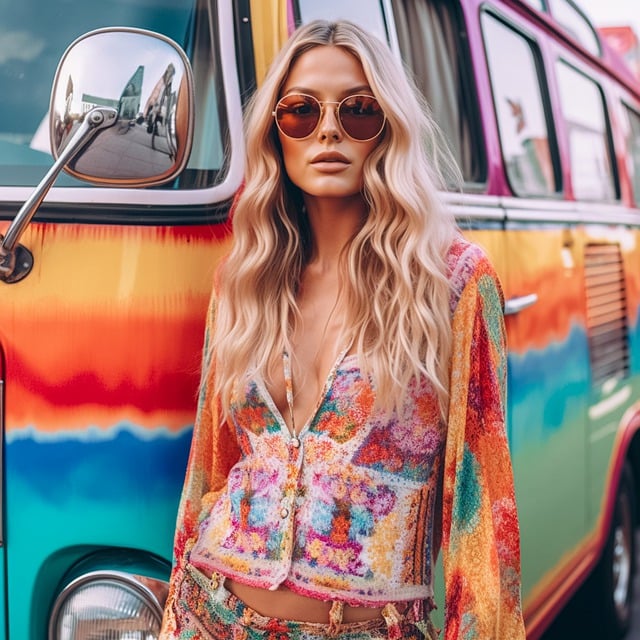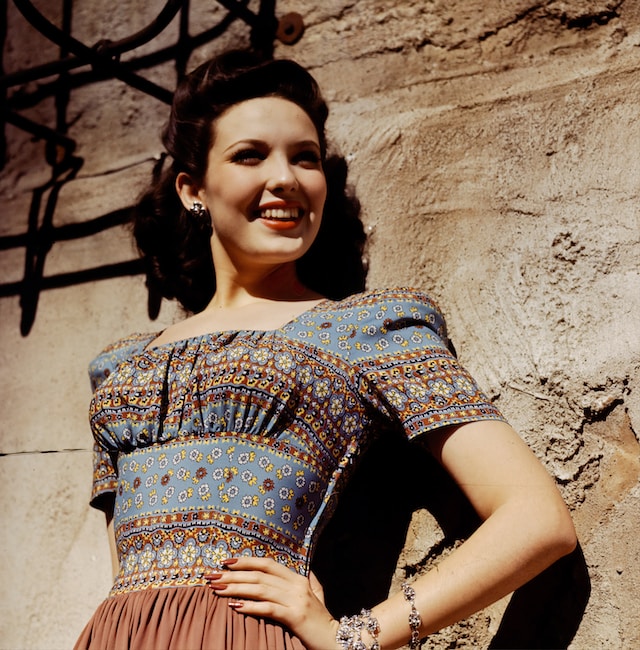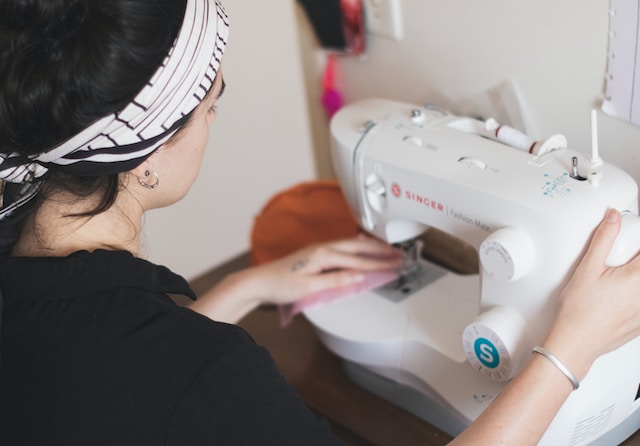Vintage clothing has made a comeback in recent years, with more and more people seeking out unique and one-of-a-kind pieces to add to their wardrobe. Whether you’re a vintage enthusiast or simply looking to mix up your style, incorporating vintage clothing into your wardrobe can be a fun and rewarding experience.

Building a Vintage-Inspired Wardrobe
When it comes to building a wardrobe of vintage-inspired outfits, there are a few key considerations to keep in mind. From sourcing quality pieces to curating a collection that reflects your personal style, here are some tips to help you on your vintage fashion journey:
Define Your Vintage Aesthetic
Before diving into the world of vintage clothing, take some time to define the aesthetics of your vintage-inspired outfits. Are you drawn to the elegance of the 1940s? Or perhaps the free-spirited vibe of the 1970s? Knowing what era or style resonates with you will make it easier to focus your search and build a cohesive wardrobe.
Research, Research, Research
To truly embrace the vintage fashion world, it’s essential to do your research. Learn about different eras, iconic designers, and the key elements that define each style. This knowledge will help you identify authentic vintage pieces while also preventing you from being misled by replicas.
Get Up Close and Personal with Thrift Stores and Flea Markets
Thrifting is a fantastic way to kick-start your collection of vintage-inspired outfits. Spend weekends exploring local thrift stores, flea markets, and vintage boutiques in search of unique finds. These treasure troves often hold hidden gems waiting to be discovered. Be patient and persistent, as building a vintage wardrobe is a journey of exploration and unexpected surprises.
Quality over Quantity
When building a wardrobe for vintage-inspired outfits, remember that quality should always take precedence over quantity. Look for well-made, timeless pieces that can stand the test of time. Pay attention to the fabric, stitching, and overall condition of the garment. By investing in quality vintage items, you’ll ensure that your wardrobe lasts for years to come.
Embrace Tailoring and Alterations
Finding a vintage piece that fits perfectly off the rack can be a rare occurrence. Thankfully, tailoring provides an opportunity to transform a promising find into a tailored masterpiece. Seek out a skilled tailor who understands vintage clothing, as they can help alter and adjust garments to match your unique measurements and desired fit.
Blending Vintage with Modern
In the ever-evolving world of fashion, one might wonder how vintage clothing fits into the modern landscape. The answer is simple: blending vintage with modern pieces creates unique and captivating looks that capture the essence of both past and present. By incorporating vintage elements into your everyday outfits, you can showcase your individuality while staying on-trend. Here are some tips to help you navigate the art of blending vintage with modern.

Pair Vintage Statement Pieces with Contemporary Basics
A great way to incorporate vintage pieces into your modern wardrobe is by combining them with contemporary basics. For example, pair a vintage floral blouse with your favorite pair of high-waisted jeans and a leather jacket. The juxtaposition of old and new creates a visually stimulating outfit that is both stylish and unexpected.
Accessorize with Vintage Treasures
Accessories play a crucial role in completing a look and adding a touch of vintage can elevate your overall style. Seek out vintage jewelry, scarves, belts, and handbags to incorporate into your ensembles. A unique vintage brooch can add a pop of personality to a plain blazer, or a vintage silk scarf tied around your neck can instantly elevate a simple white t-shirt.
Mix Textures and Fabrics
Experimenting with different textures and fabrics is an excellent way to blend vintage with modern. Try pairing a flowy vintage lace top with tailored trousers, or layer a chunky knit cardigan over a sleek black dress. The contrast between textures creates depth and visual interest in your outfit.
Incorporate Vintage Prints into Contemporary Silhouettes
Vintage prints have a charm that can bring life to any outfit. Look for vintage-inspired prints such as polka dots, paisley, or bold florals. Incorporate these prints into contemporary silhouettes for a modern twist. For example, pair a vintage-inspired polka dot blouse with a sleek pencil skirt for a sophisticated and playful ensemble.
Mix Vintage and Modern Accessories
Mixing vintage and modern accessories can be a fun way to create a harmonious blend of old and new. For instance, pair a vintage-inspired headband with your favorite modern sunglasses, or rock a vintage-inspired handbag with a trendy pair of sneakers. Mixing accessories from different eras adds a touch of nostalgia while keeping your overall look fresh and relevant.
Experiment with Hairstyles and Makeup
To fully embrace the vintage-meets-modern concept, don’t forget to experiment with hairstyles and makeup. Try a classic victory roll hairstyle with a modern twist, or opt for a vintage-inspired bold red lip to complement your outfit. These finishing touches will tie together the overall vintage aesthetic and complete your look.
Mixing Patterns and Textures
Patterns and textures are powerful tools in the world of fashion. They can transform a simple outfit into a visually captivating ensemble. When it comes to vintage-inspired outfits, incorporating different patterns and textures can elevate your look and add depth to your overall style. Here are some tips for successfully mixing patterns and textures in your vintage-inspired outfits:
- Start with a Foundation: When mixing patterns and textures, it’s important to have a solid foundation to build upon. Begin by choosing a base piece, such as a plain-colored dress or a pair of neutral pants. This will serve as the canvas for your pattern and texture combinations.
- Balance Bold with Neutral: Mixing patterns and textures can be a delicate balancing act. To avoid overwhelming your outfit, pair bold and busy patterns with more neutral ones. For example, pair a vibrant floral print blouse with a classic pinstripe skirt. The contrasting patterns will create visual interest without clashing.

- Play with Scale: Mixing patterns and textures of different scales can add dimension to your outfit. Pair a small, delicate floral print with a larger, bolder striped or geometric pattern. This contrast in scale will create a visually pleasing balance and prevent your outfit from looking too busy.
- Consider Color Palette: When mixing patterns and textures, consider the color palette of each individual piece. Look for complementing colors or hues within the same color family. This will help create a cohesive and harmonious look.
- Layer Textures: Texture is another element that can be incorporated when mixing patterns. Layering textures such as lace, velvet, or crochet can add depth and visual interest to your outfit. For instance, layer a lace cardigan over a floral print dress or pair a chunky knit sweater with a plaid skirt for a cozy yet stylish look.
- Use Accessories to Tie it Together: Accessories can play a key role in seamlessly blending different patterns and textures. Look for accessories that feature elements from your outfit, such as colors, patterns, or textures. A belt with a similar pattern as your blouse or a handbag in a complementary texture can bring cohesiveness to your ensemble.
- Confidence is Key: Mixing patterns and textures requires a level of confidence and experimentation. Don’t be afraid to push the boundaries and try new combinations. Remember, fashion is subjective, and what ultimately matters is how you feel in your outfit. Own your unique style and wear it with confidence.
Tailoring and Alterations
When it comes to vintage clothing, finding the perfect fit off the rack can be a rare occurrence. However, don’t let a slightly oversized blouse or a too-long skirt deter you from incorporating that stunning vintage piece into your wardrobe. With a little help from a skilled tailor, you can transform these gems into custom-made masterpieces that fit you like a glove. Here are some tips for tailoring and altering vintage garments to match your unique measurements and desired style:
Seek Out a Skilled Tailor: Finding a tailor who understands the intricacies of vintage clothing is key. Look for someone experienced in working with delicate fabrics, intricate details, and vintage construction techniques. Ask for recommendations from fellow vintage enthusiasts or seek out local forums and social media groups dedicated to vintage fashion to find a trusted tailor in your area.
Evaluate the Garment: Before taking a vintage piece to a tailor, carefully assess its condition, construction, and potential for alterations. Look for any tears, stains, or damage that may require repair before alterations can be made. Additionally, consider the fabric, lining, and structural elements of the garment to determine the feasibility and potential impact of alterations.
Consult with your Tailor: Once you’ve chosen a tailor, schedule a consultation to discuss your vision for the vintage piece. Clearly communicate your desires and expectations, ensuring that you’re both on the same page regarding the desired fit, alterations, and any potential modifications to retain the garment’s original charm.

Take Accurate Measurements: Accurate measurements are essential for achieving a perfect fit. Your tailor will need measurements for your bust, waist, hips, shoulders, and sleeve length, among others, depending on the specific garment. Be sure to wear the undergarments and shoes you plan to pair with the piece to get the most accurate measurements.
Preserve the Original Character: While alterations are meant to enhance the fit and style of a vintage piece, it’s essential to strike a balance between customization and preserving the garment’s original character. Discuss with your tailor the best approach to alterations that will maintain the integrity and essence of the vintage design.
Be Mindful of Historical Significance: If you’re working with a rare or historically significant vintage piece, it’s crucial to exercise caution and respect its heritage. Consider reversible alterations that can be easily undone if necessary, or consult with experts in vintage preservation to ensure any modifications align with best practices.
Embrace Creative Modifications: Tailoring vintage pieces also presents an opportunity to get creative. Discuss with your tailor the possibility of modernizing certain aspects of the garment while still maintaining its vintage charm. For example, updating the length, adding removable embellishments, or incorporating additional functional details can breathe new life into a vintage piece.
Consider Altering Accessories: In addition to garment alterations, don’t forget to explore the possibility of altering vintage accessories. Thin belts can be trimmed for a better fit, handbag straps can be adjusted, or vintage jewelry can be repurposed into unique pieces that complement your outfit.
Incorporating vintage-inspired outfits into your wardrobe is a creative and exciting way to express your personal style. By mixing and matching pieces from different eras, playing with accessories, experimenting with color and pattern, and embracing tailoring and alterations, you can create vintage-inspired outfits that are both timeless and modern. Remember to have fun throughout the process and to embrace your unique style with confidence.
